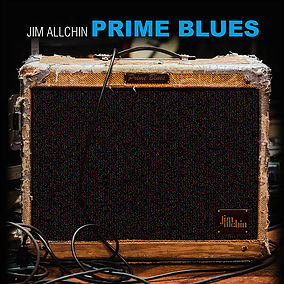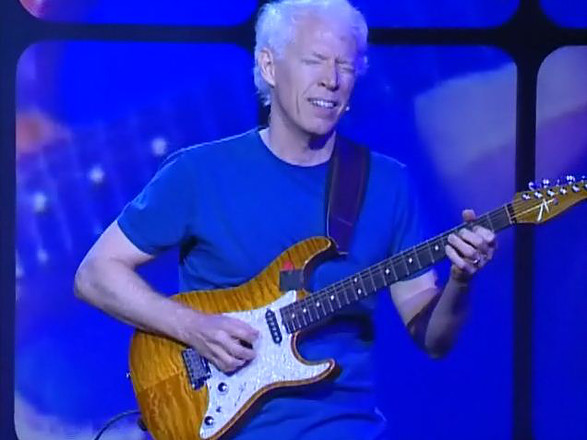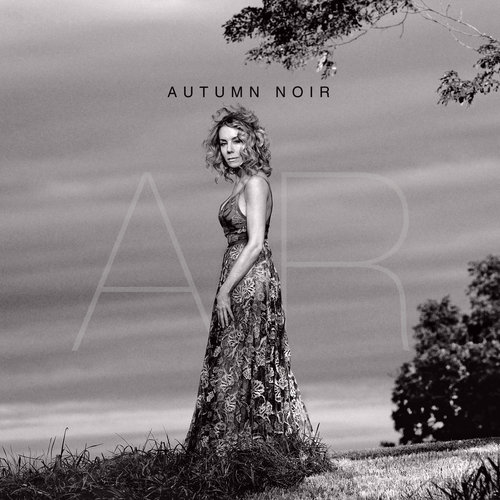Quick Pitch Points:
Release tour dates:
- Arts+Literature Lab, Madison WI, Sept 23rd
- Butler University, Indianapolis, Sept 25th
- Jazz Central Studios, Minneapolis, MN, Sept. 26th
- Constellation, Chicago, Sept 27th
- University of St. Francis Goldstone Performing Arts Center, Ft. Wayne, IN, Sept. 28th.
Personnel:
-
-
-
Clif Wallace - drums (of Marcin Zupanski, Betty Carter’s Jazz Ahead artist Residency Program)
Tracks/Lengths (quick listen recommendations):
-
Anikulapo 10:02
-
Yoruba 12:39
Inclusion 9:53
Nogah 11:36
Story
Releasing Phil’s music is an honor and we’re incredibly lucky to work with a musician/composer who’s in more in touch with these songs and the inner workings of every aspect of them than ever before. He’s one of the most musically conscious artists we’ve worked with. The depth in which he connects with his bandmates, the audience at live shows, our conversations leading up to this release, as well as his literature writing, has been an adventure.
On a side note, he also wrote the pristine liner notes for Matthew Golombisky’s Cuentos release. This entire album, The Waters Above, works on a whole, interweaving the themes of each so that each has a specific reason for existing. There’s nothing happen-chance here compositionally, though he allows the personalities of the Chicago-based band express themselves freely and openly as to interweave other aspects of the universe in which he finds himself in.
The energy that alto saxist Greg Ward and Schurger create during the complex, rapid-fire and often chromatic melodies is intense, especially when either of them blast off into their individual solos. It’s chilling. And the support that would be needed to keep the energy on the level they are dishing out is catapulted further by the solid and confident rhythm section of bassist Jeff Greene and drummer Clif Wallace. The “brothership” of the group goes deep. Ward and Greene have been playing in each other’s groups, blink. and Fitted Shards for more than 10 years and have multiple records together, on labels such as Thirsty Ear, ears&eyes, Whistler, and Nineteen Eight.
About the Album
On his second ears&eyes Records release, The Waters Above, guitarist and composer Phil Schurger continues down the path of monumental storytelling through symbols referencing the cosmos, and a curiosity for world cultures. As with with his first release, “Echoes of the Ancestors”, each composition is multi-dimensional and episodic. The opening melodic statement sets the scene, which is followed by solo sections and interludes, crafted to continue the development of the ebbs and flows of the broader story. The band is dynamic in its ability to sculpt the music, whether propelled by Greg Ward and Phil Schurger as the soloists, or Clif Wallace and Jeff Greene’s dynamic rhythm section playing.
"The Water's Above" as an album title, is a reference to the connection between the higher self and the lower self. The linking of these two parts of the being is a common aspect of many meditation paths. On the Tree of Life, this idea is reflected in several ways as one deepens in their understanding of the relationship between the Sephiroth. In Eastern iconography, often you will see a picture of a yogi seated in lotus pose with the image of a guru hovering above their head. Part of the practice of meditation is to create a continuous, conscious link between the upper and lower aspects of the being. In this manner, the normal, everyday mind can become awakened to these higher waters, and tap into the pools of wisdom through the intuition. For it is in the abstract mind that the root of innovation dwells.
The album opens with the streaming, linear composition Scorpio. There are several associations both simple and esoteric at play in the title. Schurger has long been a fan of George Crumb’s works, particularly Makrokosmos. Crumb alludes to his influences by leaving the initials of other composers born under a specific sign. If Schurger were to do the same, the initials would be M.T. (Mark Turner), whose linear approach influenced Schurger in this period of his composing. Ward plays the melody, while Schurger's accompaniment adds highlights both chordally and melodically. The music gives the listener the image of moving through a maze, in which each turn leads to another set of questions, grasping towards a point of arrival. Once the end of the maze is seen, the lines build intensity, ascending as they rush towards it, and then cascade earthward in spiral like melodies to announce the arrival of the solo section. By compositional design, Ward takes the first solo, which starts off subtle and delicate, and slowly builds to a crescendo through the dynamic interaction of the rhythm section. The interaction between all members of the group can be described as complex and intense, dynamic and playful. Wallace’s interactions with Ward’s lines are provocative, and incredibly nuanced. Greene is adept in his balance of creating space when necessary, and then propelling the music forward with intensity and melodic genius. Schurger’s chordal accompaniment provides a beautiful array of textures that guide the improvisation through each section, directing the band through a series of sign posts towards the solo’s peak. This sets up an open bass solo for Greene. His solo is questioning; a curious reprieve, as if one is setting up a plan for their next moves in a game of chess. Once the individual has collected his thoughts, the music starts again, set up by a bass ostinato in 6/4 which sets up Schurger’s solo. The guitar enters mysteriously with ambient volume swells to set the space. Schurger’s improvisational approach is to utilize melodic fragments from the melody as the foundation around which his lines swirl. At different points the fragments are used to propel the solo through various sections, eventually moving from 6/4 to 4/4 time. At this point, the changes modulate from C minor to E minor and the intensity of the music increase as it pushes towards its finale, and the restatement of the opening melody.
Anikulapo is a Yoruban word meaning “He who carries death in a pouch.” Schurger first encountered the word through the Afro-Beat singer Fela “Anikulapo” Kuti. The meaning of the word resonated with Schurger, who had encounters with death in his early life. He states: “I had several brushes with death in my early life. As a result of this, I began to look at the concept of death as a driving force for living life with focus and intention, recognizing that time is our only currency in this physical world. These experiences defined my pursuit of both music and meditation.” Further he states: “Music is an offering for the betterment of our collective community through an ongoing dialogue amongst generations of musicians, and meditation is quite the same. The depth of the work we do opens doors for those who will come after us.” The composition is both vast and mysterious. Quartal chords are used over drones to provide a vast openness of the interludes and solo sections, while the air of the chord melody which comprises the main body of the composition is mysterious and questioning. Of note is Schurger’s solo. He opts to leave linear playing behind, and makes a motific chordal statement. This leaves space for bassist Jeff Greene to take more of an active role.
On “Motion”, the band returns to the intricacies of linear melody. Schurger’s compositions Scorpio, Motion, and the Tower (released on Echoes of the Ancestors), were all written in the same period when Schurger was exploring complex linear structures derived from moving chords as frameworks for melody. The bass groove and drums here are meant to provide contrast, and give the melody a foundation to float over. Schurger again plays a chord melody part to fill out the lines played by Ward. The mood is playful and light. This is one of Schurger’s few straight ahead pieces in which the form is more akin to a jazz standard. The melody is stated, and because of the length of the form, each soloist takes one round through the form. The music relaxes into the groove of the rhythm section, and the melody is restated.
The inspiration for “Yoruba” came from one of Schurger’s early African-American musical mentors, Michael Patterson, who was a student of both Qabalah and West-African religions. Patterson had studied Qabalah with a Panamanian Rabbi who showed him common roots in the practices of both forms of spirituality. He introduced Schurger to the music of the Cuban Santero, Milton Cardona, and the concept of the specific use of rhythms as a ritual language.
The composition opens with a spacious melody over a bass drone, and rubato drums. As the melody contracts, the rhythmic waves of the drums come crashing to a peak to establish time. The melody is restated in-time followed by Ward’s solo. Schurger’s accompaniment, as in Scorpio, is dynamic and propels the band through the form highlighting key points of transition. Schurger touches for a moment on his avant-garde roots as his solo enters free, with the rhythm section playing out of time. The trio slowly starts to bring time in as the music becomes more intense and directed. Schurger’s solo peaks as Ward brings the melody back in. The outro features Ward and Wallace dueling rhythmically to bring the song to a fever pitch as the final chords come slamming down from the full band.
Inclusion is a highly delicate, through-composed work. This is a resting point, and perhaps one of the album’s highlights because of the sensitivity with which the band plays the music. The melody whispers over moving chords, as the drums sculpt delicate passages with mallets throughout. Both Ward and Schurger’s solos are played with a high degree of melodic sensitivity over the changes, while the rhythm section compliments the atmosphere with a sense of expression that allows the music to breathe. After Schurger’s solo, arco bass is accompanied by chord swells in the guitar. The mood is haunting and still as the delicate last breaths of saxophone melody hover above the band.
The images from the song titles all culminate in Nogah. The linear play and mazes of Scorpio and Motion have wound their way to conclusion. The atmoshphere of Anikulapo, and the rhythms of Yoruba have told their stories. The quiet reprieve of Inclusion, brings us into the open waters of Nogah. Nogah is a qabalistic reference to the planet Venus, and the sephirah Netzach on the Tree of Life. The path leading from Netzach to Tiphereth on the Tree is associated with the Water sign of Scorpio, and the tarot card of Death. The opening rubato is a mysterious and dark statement of the melody by Schurger. The ambience is watery in texture, enhanced by the use of thick reverb and flanger. As it closes, the full band enters like waves crashing down on the rocks. The composition’s melody is questioning and contemplative. Schurger’s solo, starts off with a haunting mix of chords and melody, before launching back into the changes of the tune. Here, as in Anikulapo, the solo is motific by intention. Schurger opts to play more melodically, with a blend of lines and chords leaving space for the rhythm section. As the last lines of the solo descend, the band opens into a rubato section with a phrygian melody played first by Schurger, and then with Ward accompanying. As the intensity of the rubato increases, the band comes crashing in to set up Ward’s final, momentous solo of the album.” - Phil Schurger (musician/composer/author)
Credits:
Recorded at I.V. Labs by Manny Sanchez in Chicago IL USA
Mixed and mastered by Miles Fulwider in Ft. Wayne IN USA
Album layout/design by Rebekah Frey in Ft. Wayne IN USA
Links:
www.jazzglobalbeat.blogspot.com jazzglobalbeat@gmail.com
|












